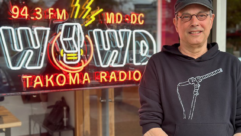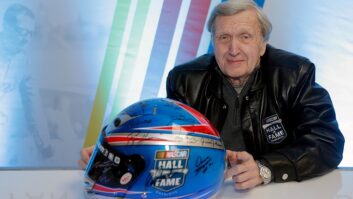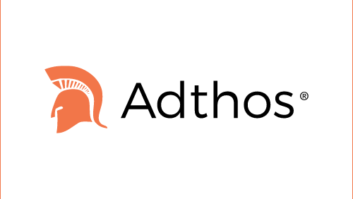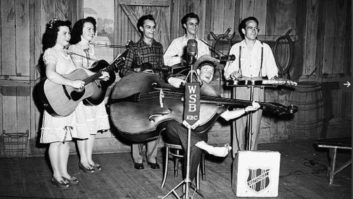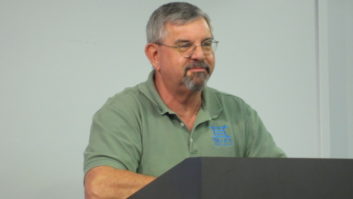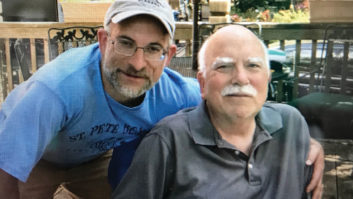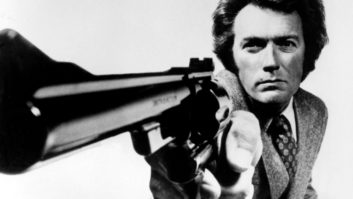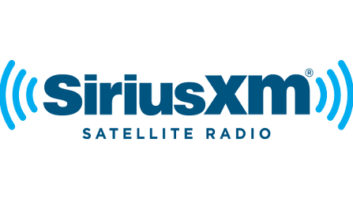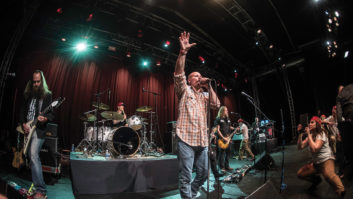
Motor Racing Network’s 53-foot truck carries equipment; it functions as the remote operations center at the races. What takes three networks, 38 weeks, teamwork, multiple cross-country trips, lots of RF, fiber, microphones and plenty of computer power? The NASCAR Sprint Cup Series. That’s how these races get to a radio or audio stream near you.
Three networks cover the series, NASCAR’s premier national touring series since 1949.
The oldest is the Motor Racing Network, or MRN, launched in 1970 by NASCAR Founder William H. G. “Big Bill” France as a subsidiary of the International Speedway Corp.
The Performance Racing Network was founded in 1979 and is a subsidiary of Speedway Motorsports Inc. The Indianapolis Motor Speedway Radio Network is focused primarily on coverage of the IndyCar Series, but for one weekend in late July it covers the Brickyard 400, held on the historic Indianapolis Motor Speedway oval. IMS produces its coverage of the 400 in association with PRN.
THE CREW
MRN, based in Concord, N.C., has the most broadcasts from all of the ISC tracks, independent tracks like Pocono and Dover. It’s also busy with broadcasts from NASCAR’s Nationwide Series and from all Camping World Truck Series races, and in 2013, all of the Grand-Am Rolex Series Sports Car Races.

Motor Racing Network’s Audio Engineer Todd Costello operates the board in the MRN trailer. Engineer Bob Wolfe works with MRN Chief Engineer Doug Watson and Satellite Engineer Mike Weaver.
MRN hauls in a semitrailer and satellite transmission truck. Wolfe says, “We have three broadcast trucks, a 53-footer, 40-footer and an 18-foot truck. The 53-foot unit gets the most work, doing about 33 venues per season.”
Inside the broadcast truck, there’s a main studio used to mix the broadcast, a two-person talk booth that can be used for on-air or recording and two edit suites used for recording and show prep. There’s enough room for eight reporters to sit and work on show preparation before going into one of the booths or studios. The 53-foot unit gets a lot of work, and puts on lots of miles.
Wolfe says the truck travels about 30,000 miles a year. That pace presents the biggest technical challenge for the crew is repair work.
“The truck is out 6 to 8 weeks sometimes before coming back to the shop. When things break, they must be fixed on the road. Getting replacement gear to the truck, and then getting the gear that needs to be repaired back to the shop or a repair facility has its difficulties. The last time I worked at a radio station, it didn’t bounce down the road,” he says.

Labeled wireless headsets are stowed away before and after the show. Each headset is assigned a user, a frequency and a physical location at the track. PRN, which is headquartered at the flagship of Speedway Motorsports, Charlotte Motor Speedway in Concord, N.C., originates race broadcasts from the Speedway Motorsports facilities — Charlotte, N.C., Bristol, Tenn., Fort Worth, Texas, Atlanta, Las Vegas, Loudon, N.H., Florence, Ky., and Sonoma, Calif.
Harrill Hamrick is the director of engineering/chief engineer for PRN, and also mixes the broadcast from the trailer they use as an on-site technical operations center. Bill Parrott primarily is responsible for PRN’s RF operations. They are joined by Ben Blevins, Tracey Rice and Scott Hollingsworth, who rotate as the booth technician at specific races. The booth technician is responsible for ensuring the anchors have a solid link to NASCAR timing and scoring, and responsible for the booth audio gear.
Both MRN and PRN tie their anchor booth to their broadcast trailers via fiber. Hamrick says PRN uses a Telecast Adder II, “which allows for 24 channels of audio from the booth to the trailer, and eight from the trailer to the booth on a single strand of single-mode fiber. Our unit has two lasers for redundancy.”
Pit reporters and turn announcers are connected by wireless microphone units. In the case of MRN, Wolfe says they use RF in the unlicensed band, so it’s a matter of scanning the spectrum at each stop and choosing clean frequencies. PRN uses Lectrosonics Venue series receivers and UM450 beltpack transmitters. Hamrick says PRN uses two frequencies at the track, one for pit reporters and one for turn announcers.
“We do coordinate the use of the frequencies where SBE [Society of Broadcast Engineers] frequency coordinators are available. We also coordinate against the folks at Broadcast Sports Technology, who provide RF for the television broadcasters.”
MIXING

MRN’s Satellite Uplink Dish Truck. MRN and PRN use different protocols to get the broadcast mix of audio from anchor booth, turn announcers and pit road reporters to the radio and Internet stream.
MRN, says Wolfe, uses a dedicated uplink truck with an AVL Technologies dish and dual transmitters, as their primary link to WestwoodOne, formerly Dial Global, the program distributor. For backup, “we also have two ISDN units on the truck ready to connect should both transmitters fail. And if all of that should decide to quit, we have a Comrex POTS unit ready to go.”
Taking a different approach, PRN, says Hamrick, sends the mixed broadcast back to PRN studios in Concord, so the production director, can record the feed to produce a post-race highlight package that ends each broadcast. All of that is sent via ISDN to a Cumulus Media uplink, with a Comrex Vector as a backup.
Both PRN and MRN stream their broadcasts (post-delay feed) from their main studios. The uplinked feeds have contact closures for program start and finish, legal IDs, local commercial insertion and if necessary, contact closures for a rain delay event. PRN uses a Rivendell Linux-based automation system from Paravel Systems, connecting by IP to their SAS router, to generate the commercial closures. It also generates data that Cumulus Media uses to effect regional commercial insertions.

The Pagoda at the Indianapolis Motor Speedway.
Credit: Indianapolis Motor Speedway Rick Evans is chief engineer for the Indianapolis Motor Speedway Radio Network. Most of his efforts are focused on coverage of the IndyCar Series and its crown jewel, the Indianapolis 500, the logistics of covering an event at the “Brickyard” are somewhat simpler. “Everything takes place on the 9th floor of ‘The Pagoda,’ where almost everything is permanently mounted. The pit and turn reporters are tied into the booth by RF.”
IMS uses an ISDN link to Cumulus Media to get the broadcast to its affiliates, but is looking into using a Comrex Access for backhaul to Cumulus’ satellite uplink facilities.
Wolfe had these words of advice for those engineers and operators responsible for the technical operations of an important broadcast, the product of years on the road:
“Redundancy is the key. Have a backup for your backup. NASCAR doesn’t care if our gear is down, they’re still going to run the race, and we have to be ready. If you need one, take two; if you need two take four.”
Paul Kaminski is proprietor of PK Communications Co., host of its “Radio-Road-Test” syndicated radio program. He has been a Radio World contributor since 1997. Email [email protected] or tweet @msrpk_com.




